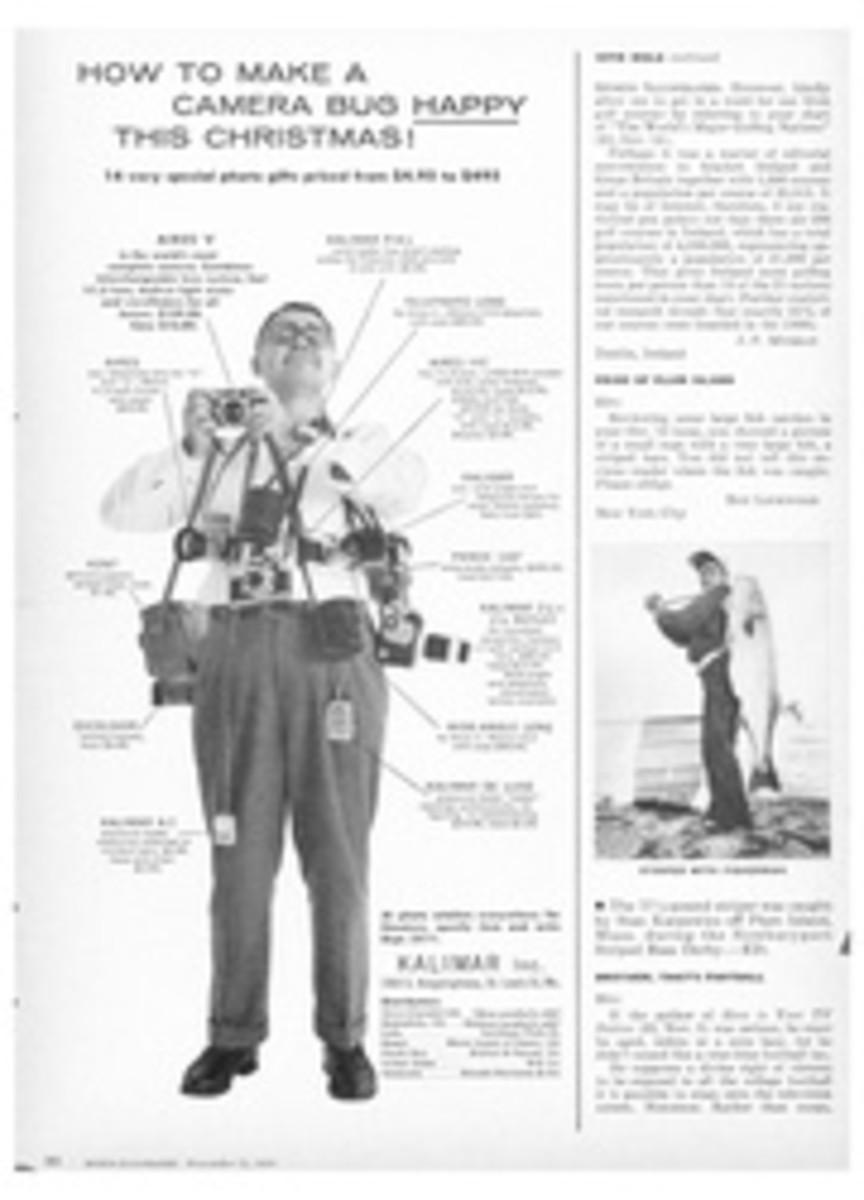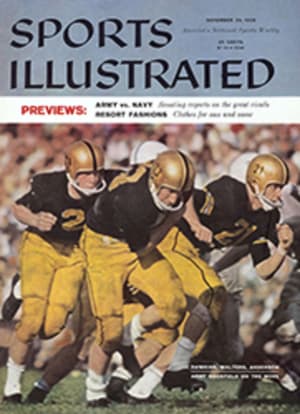
Giants' Killer
No single assignment in the field of sport is more demanding than playing a linebacker post in professional football. It requires an almost impossible blend of abilities: size enough to step into a hole in the line and stop a 230-pound fullback head-on, speed enough to cover one of the league's fast ends or halfbacks traveling at a full head of steam.
One of the rare gentlemen who blends these mutually exclusive abilities is a chunky, sandy-haired West Virginian named Robert Lee Huff. He is called Sam for reasons lost a zillion tackles ago, and he is the middle linebacker for the New York Giants. Huff was a key figure in the Giants' surprising victories over undefeated Cleveland and Baltimore on successive Sundays, and the difference in his assignments in those memorable upsets points up the troubles which beset a linebacker.
Against the Browns Huff keyed on Jim Brown, the great Cleveland fullback. "We knew Brown carried the ball about a third of the time for Cleveland," he explains. "Since most teams have the ball for around 70 plays on offense, that meant that Brown would carry 20 or 25 times. By sticking with him, I was in front of the play most of the afternoon. On the long run he made for a touchdown, I had shifted to the other side. That was a tough assignment, covering Brown. When you hit that guy, he lunges like a bull and sometimes he lunges right out of the tackle."
Although the Baltimore fullback, Alan Ameche, is a good one, he does not carry the brunt of the Colt attack. In the upset of the Colts, Huff keyed on the center, watching to see in which direction he would block, then filling the hole. Huff intercepted a Colt pass late in the game to stop a drive, and the interception was a good example of the meticulous preparation he makes for each game.
"During practice each week we work on the offensive patterns we know the opponent will use," he explains. "Our offensive unit runs them over and over until we become accustomed to them. We knew that when the Colts went into this formation with a third down and medium yardage in our end of the field they liked to throw a hook pass to Jim Mutscheller, the right end. I waited a second, then dropped out into the hooking area and, sure enough, George Shaw threw the ball toward Mutscheller. It was easy to pick off."
Keying on a particular player is not as easy as Huff makes it sound. "You have to make your move the second your key does," Huff says. "If you hesitate, the offense can reach you with blockers. The toughest play for a middle linebacker to defend against is the fullback draw, where the quarterback starts to fade as if to pass, then slips the ball to the fullback banging up the middle. When he fades, the middle backer has to drop back in a hurry to cover his passing area and then, when the fullback comes back up the middle, you're out of position and it's easy for the offense to get a blocker on you."
Huff's pregame studies, implemented on the practice field, include a thorough recap of the habits of opposing quarterbacks: how many times they may be expected to run the ball, what holes they like to hit, which receivers they prefer in long and short passing situations.
"Then, too, it's complicated because we have to change our defense the second time we play a team," Huff says. "We can use our normal defense the first game. Then, figuring that the other team is going to be studying the movies, we do things differently the second time. Pittsburgh only gained 45 yards against us on the ground in the first game, but we had to move the defense around a little for the second."
Since the Steelers beat the Giants 31-10 in the second game of their series last Sunday, obviously the change was not for the better. Huff, in the second Pittsburgh game, played his usual good game, but the Giant offense slumped against a new Pittsburgh defensive strategy which sent the Steeler linebackers firing through the Giant line on play after play, harrying Quarterback Chuck Conerly so grievously that he seldom had a chance to throw in the second half. Huff's counterpart in the Steeler defense, Middle Backer Dale Dodrill, rushing up the center against Conerly, accounted for much of the heavy pressure.
The loss dropped the Giants out of their brief tie with Cleveland for first place in the Eastern Conference as the Browns, after two straight losses, rebounded behind great running by Jim Brown to beat the Washington Redskins 20-10. Brown broke the league rushing record for a season by gaining 152 yards for a total of 1,163, surpassing the old record of 1,146 set by Philadelphia's Steve Van Buren in 1949. Brown has four more games to go.
The Baltimore Colts, still playing without the services of Quarterback Johnny Unitas, relied again on what has become the league's best defense in beating the Chicago Bears 17-0 in Chicago and taking a full two-game lead in the Western Conference with four to go. George Shaw was again the Colt quarterback, and he performed creditably enough, but the fact that Unitas was still out after a needless injury points up a defect in the league rules which cries for a remedy. Unitas was injured in the Green Bay game in Baltimore three weeks ago. The Colts were leading at the time 21-0. Unitas, carrying the ball on a sneak, had been tackled and was lying face-down on the ground when a Packer player, whose tactics have been questioned before by other players in the league, plumped down on his back with both knees, breaking three of Unitas' ribs. Only the best of luck saved him from an extremely serious injury.
The Colts, 56-0 victors in the game, did not protest the incident at the time and have not protested it since on the theory that winners should not cry. This may be good sportsmanship, but it does not help rid pro football of an evil which may eventually cost much of the hard-won popularity of the game.
When then-Detroit Quarterback Bobby Layne was injured by an after-the-handoff tackle by the Bears' Ed Meadows two years ago, no serious penalty was given Meadows. John Symank, the player who dropped on Unitas with both knees, is still playing for the Packers. Unless the league takes a drastic and necessary step to end the crippling of stars like Layne and Unitas, the mortality rate on quarterbacks will continue to be high.
As a suggestion, when an impartial study of game films shows that an injury could have been avoided, the league commissioner should be empowered to either suspend the offending player for the rest of the season or bar him from professional football for life. Harsh? Certainly, but Unitas and Layne could have been permanently crippled. As one coach pointed out, the truly good professional players are rarely involved in such incidents. Those involved are usually journeyman players at best, and their absence would hardly be a loss to the game.
Elsewhere around the NFL last week, the Los Angeles Rams stayed in hoping distance in the Western Conference by whipping Green Bay 20-7. Detroit continued its recovery with a 35-21 victory over the dying San Francisco 49ers, and the Philadelphia Eagles, behind Norm Van Brocklin's great passing, outscored the Chicago Cards 49-21.
[originallink:10487336:41347]
PHOTO
STUDYING ENEMY OFFENSE as demonstrated by teammates, the New York Giants' Sam Huff peers through hole in line as he prepares for football's toughest chore.

